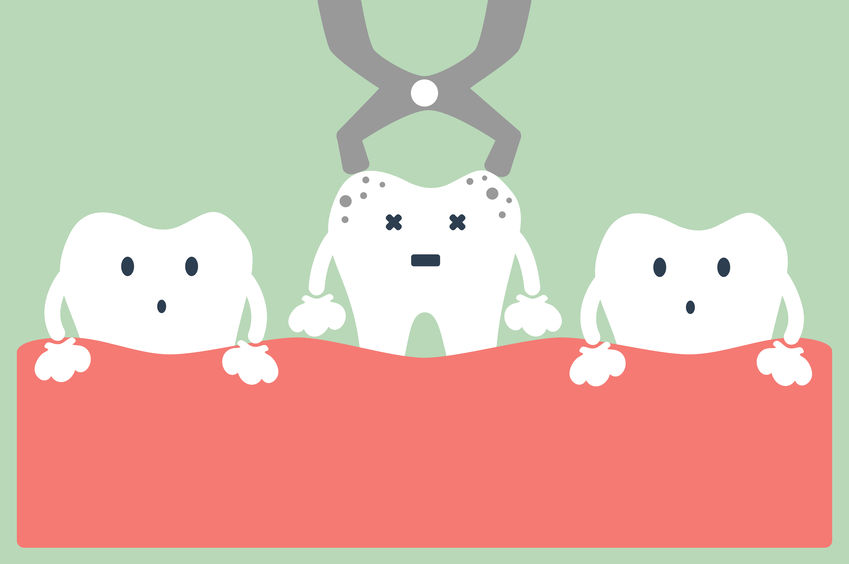Nobody wants to reach the point when their dentist has to extract a tooth. Teeth play such a major role in eating, speaking, and our self-esteem. How can you smile brightly with a gap in your mouth? Fortunately, your dentist will be able to recommend teeth replacements, such as bridges or dental implants to replace the missing tooth.
However, there are cases when knowing what leads to tooth extraction can help you prevent it from happening. More care and oral hygiene, periodic checkups to see that your teeth are in good conditions are just a few of the things anyone can do to keep their teeth healthy and strong.
Teeth Are More Fragile than You May Think
Many people test their teeth with a fingernail, by gently tapping them. They feel and sound strong as a bone. In reality, the tooth is a complex organ. The “bony” exterior is in fact enamel, the only natural barrier teeth have against outside aggressions, such as acidic foods, food debris and bacteria.
Under the enamel there is a layer called dentine, with a porous structure. When the enamel is chipped, you feel sensitivity to cold or hot foods and drinks, because they reach this sensitive layer.
At the core of the tooth is the pulp cavity, containing the root canals. Blood vessels and nerves pass through the root canals, making teeth a living part of your body, not just a piece of bone.
Also, two thirds of the tooth are invisible – the root. It is firmly implanted in the jawbone. This means that if there is anything wrong with this part of the tooth, you are unable to see the damage. When you start feeling pain, the damage is quite advanced.

What Are the Leading Causes for Tooth Extraction?
Now that you understand how complex and sensitive teeth really are, here are some ways in which they may get damaged so badly, that the dentist has to extract them.
- Tooth Decay
According to a trusted Parker dental implants oral surgery practice, this is the first and most frequent reason for tooth extraction all over the world. A decayed tooth is completely compromised by bacteria – no course of treatment or dental procedure can salvage it.
This does not happen overnight. First of all, bacteria have to pass through the outer enamel layer. If you go to the dentist for frequent checkups, the first signs of tooth decay will be duly noted, and your tooth can be saved.
- Gum Disease
Reddish and swollen gums are a sign of gum disease. It is not just inconvenient and painful, it is also dangerous. Over time, the gum tissue becomes so deteriorated that it can no longer support the teeth. They either fall off by themselves, or have to be extracted by the dentist.
Diagnosing and treating gum disease is not hard at all. You will be prescribed various drugs and your gums will heal. But you need to see your dentist as soon as you notice anything changed in the aspect of your gums.
- Overcrowded Teeth
In some cases, teeth grow too big for the available space in the jawbone. It isn’t your fault, this is all Mother Nature. An orthodontist may recommend removing one permanent tooth as part of the process of aligning the other teeth properly, by giving them more space.
- Broken Tooth
If a tooth is chipped in an accident, an orthodontist may reconstruct it with a crown or a cap. If the breakage line is close to the gum, this approach is not feasible. Instead, the remaining part of the tooth will be extracted and you can have a dental implant in its place.



